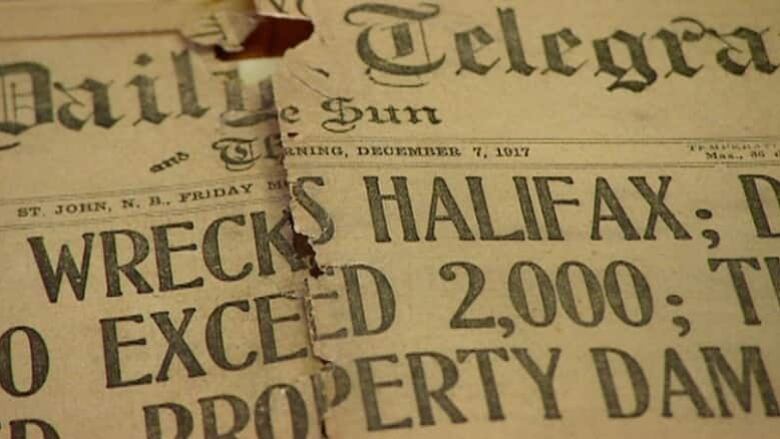Halifax Explosion: Commemorating 97 years since tragedy
Blast levelled city, killed 2,000 people and injured another 9,000

Today marks 97 years since a cataclysmic explosionkilled thousands, and maimed and injured many thousands more in Halifax.
Commemorations of the tragedy took place throughout the region.
Fred Honsbergerhas organized commemorations for the Halifax Explosion for the last three years. He said it's the third year having the daily noon gun in Halifax sound at 9:05 a.m.
Thats to recognize the moment of the explosion and thats followed by a one-minute ringing of church bells and the shipssirens in the harbour the navy and the merchant ships, including Theodore Tugboat and the Acadia they all sound for 30 seconds to celebrate the lives of those who suffered and also to recognize the relief efforts of those who assisted them in the aftermath in Nova Scotia, from Boston and from across Canada," said Honsberger.
He said it's important to remember what happened that day.
"In the Halifax Explosion, three per cent of the population of Nova Scotia was killed, outright. It was the biggest [man-made] explosion in the history of mankind prior to Hiroshima. It was a huge disaster and the loss of life, the devastation, the damage to property was enormous," said Honsberger.
On Dec. 6, 1917 at 8:45 a.m., the French cargo ship SS Mont-Blanc, fully loaded with explosives, collided with the Norwegian vessel SS Imoin the Narrows between Halifax and Dartmouth.
About 20 minutes later, around 9:06 a.m., the fire on board SS Mont-Blanc ignited the explosives in her hold, causingthe largest man-made explosion the world had ever seen.
The blast levelled most of the city and sent shards of glass and burning debris flying for miles. Aftershocks were felt as far away as Sydney, 435 kilometres away.
When the smoke cleared, 2,000 people were dead and another 9,000 were wounded. Half of the city's population, 25,000 people, were left homeless.
"Its a big part of Halifax history. There are a lot of Haligonians who were affected by it and their ancestors too," saidSgt. Randy Westhaver, part of the Halifax Citadel Regimental Association.












_(720p).jpg)


 OFFICIAL HD MUSIC VIDEO.jpg)
.jpg)



























































































